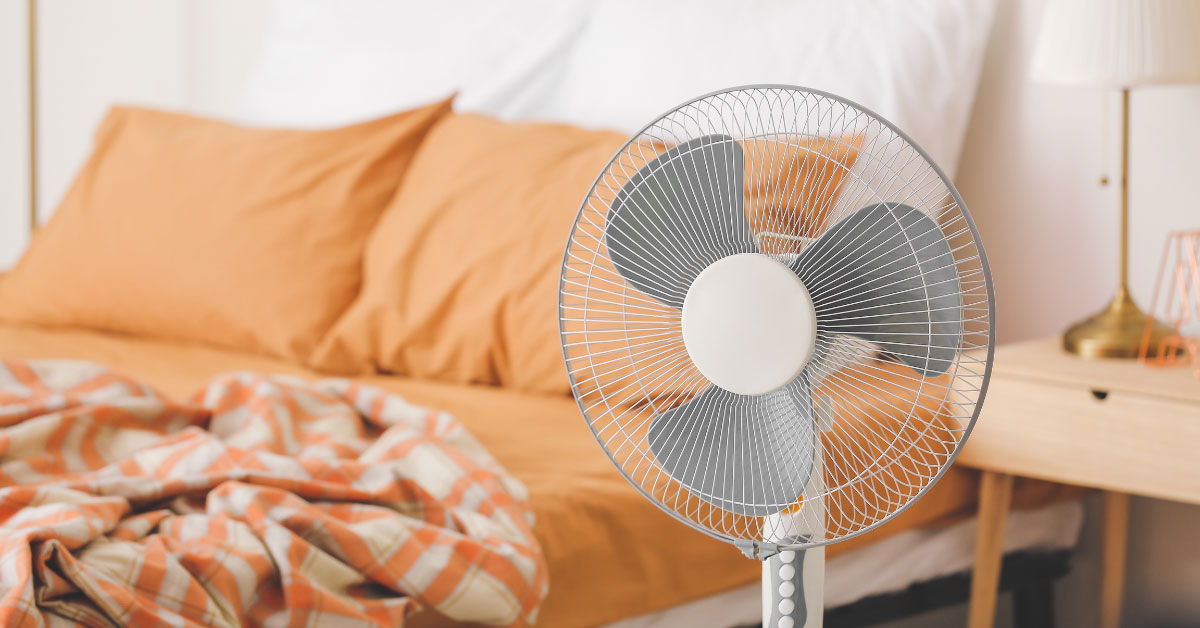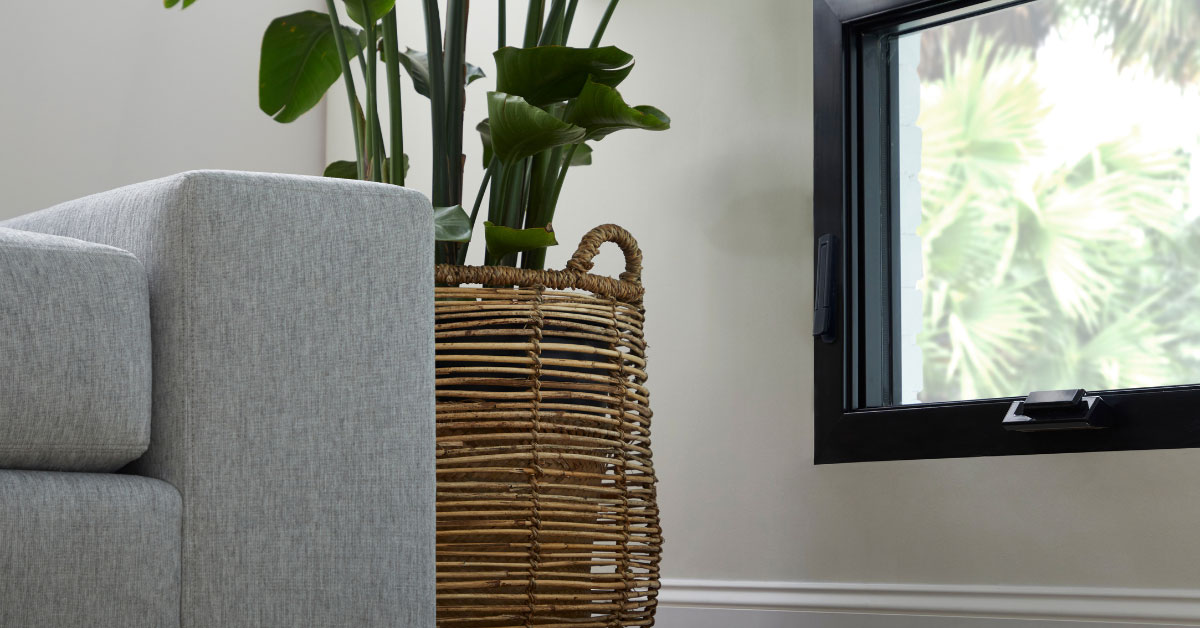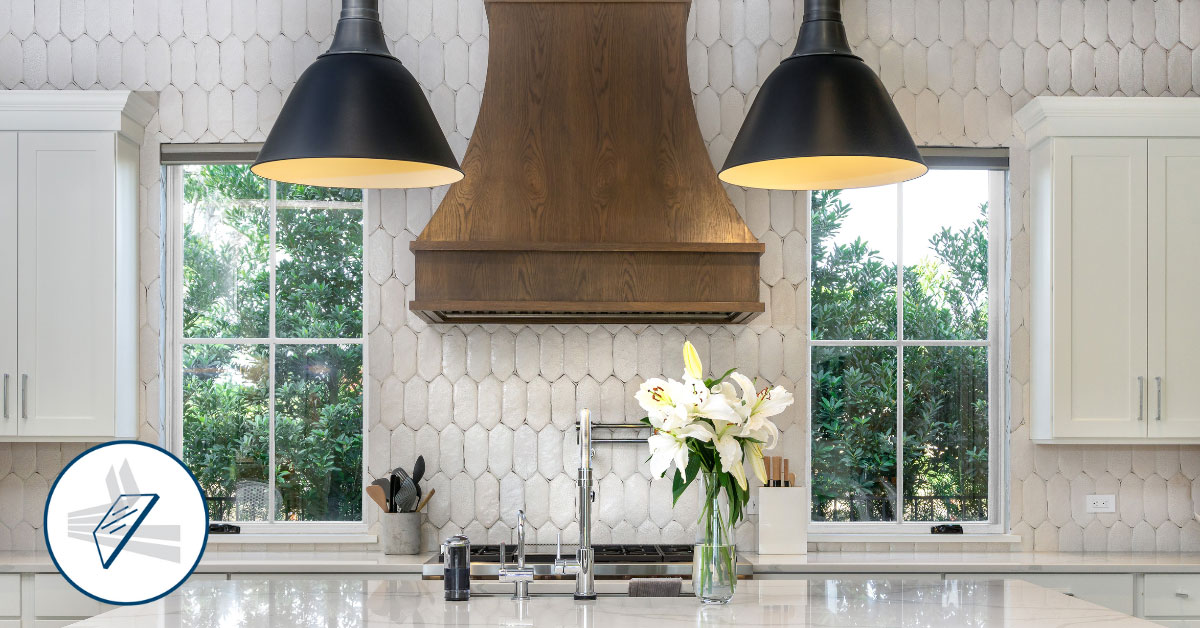After months of complaining about the cold, it feels wrong to complain about the heat. But hot air inside your house is a serious issue. It’s uncomfortable, draining and potentially dangerous, especially for individuals who are vulnerable to the heat, like seniors and those with health conditions.
Blasting the air conditioner is certainly one strategy for coping with extreme summer heat but can prove to be expensive. With some thought and planning, your windows and window coverings can help enhance your summertime cooling strategy cost-effectively.
Read on for our tips to enhance air circulation, block excessive sunlight and take advantage of window treatments for better temperature control in your home.
Manage Sunlight in Your Home
We can’t manage the sun, but we can decide how and when it enters our homes through our windows. Direct sunlight brings welcome light and sometimes not-so-welcome heat. In summer, uninterrupted sunlight increases indoor temperatures, along with air conditioning bills. On top of that, the high amount of energy used by air conditioners contributes to greenhouse gas emissions and global warming.
Fortunately, there are several strategies you can use to prevent heat from entering your house.
Keep Windows Shielded When It’s Sunny
Since the sun rises in the east, east-facing windows will get direct light in the morning on clear, sunny days. And west-facing windows have the potential to get plenty of light (and heat!) in the afternoon.
Whether you have an air conditioner or not, experiment with keeping the windows and window coverings closed when the sun is shining directly in. If you’d like to open the windows for fresh air, do so after the sun goes down. A good rule of thumb is to keep the windows closed when the air outside is hotter than in your home. Open the windows when it’s cooler outside than indoors.
Don’t rely on your own assessment of the weather—wind makes the air feel cooler than it is. Use indoor and outdoor thermometers for accuracy. Place the outdoor thermometer in the shade rather than in direct sunlight to get a fair assessment of the temperature.

Fan the “Flames”
During cooler evenings and overnight hours when windows are open, place a fan at a nearby window to speed the cooling effect, exhausting hot air from your room and pulling cool air into the house through other open windows. You can also use a fan simply to move air over your body, giving the sensation of coolness.
In temperate climates, ceiling fans can be worthy alternatives to central air conditioning. Hang them at least 2.5 meters above your floor and make sure they rotate counterclockwise to push air straight down. As with the window fans, it’s helpful to use them to circulate air during cooler evening and morning hours.

Choose Effective Window Treatments
Used strategically, blinds and drapes can block up to 65 percent of the heat that’s attempting to come through your windows via sunlight.
Insulated cellular shades, made of pleated materials that fold up accordion-like, have a higher R-value, or thermal resistance, than other window coverings. The air pockets within the material act as insulators, reducing the amount of heat that passes through.
Roller shades, raised or lowered from a roller bar at the top of the window, vary in their heat performance. Typically, heavier fabrics offer better thermal performance, but roller shades are generally more suited to privacy and blocking sunlight, rather than absorbing heat.
Vertical or horizontal slatted blinds offer flexibility, meaning you can easily adjust them to control glare, sunlight in the home and heat gain, depending on the angle you set them at. When they are fully closed, they can be effective in reducing the heat that enters your home.
Curtains or drapes vary in their ability to protect your home from heat gain, based on their colour and their fabric. Blackout curtains are widely available and needn’t hamper your home’s aesthetic—they come in a multitude of colours, with room-darkening components built in.
Think Creatively
Interior blinds and shades are important, no question, but blocking light from entering via the exterior of your windows can be even more effective.
Exterior roller blinds, more common in Europe, are a strong option if you can get them. But you can get a similar effect with a little creativity. Place large potted plants, climbing vines on a trellis or small trees in front of windows. Deciduous trees will help to shade your home in summer while permitting sun to shine through in the colder months.
Awnings can also help alleviate indoor heat, while providing a nice place to sit in the shade outdoors as well. Protect your home from heat on the outside to prevent heat from building up in your home’s solid materials or foundation.

Take Advantage of Products and Tools That Can Help
A visit to your local hardware store can help you with your home cooling goals. First stop, the weather-stripping aisle.
Weather stripping is both the action of adding insulating material around your windows and the material itself. Use weather stripping to stop airflow through cracks and gaps in window and door frames. To locate trouble spots, pass your hand over the window and frame surfaces to feel for blowing air. Apply weather stripping to leaky areas to keep hot air out and cool air in.
Reflective UV and heat blocking window films offer another do-it-yourself solution for problem areas, such as particularly hot rooms or the sunny side of your house. Window films can significantly reduce the amount of heat from the sun that comes through your windows while preserving your view.
Window films can also reduce glare on televisions and computer monitors and block ultraviolet rays that might otherwise fade interior furnishings.
Explore Low-E Glass Options
When purchasing new windows, talk to your window consultant about low emissivity (Low-E) glass coatings. They are designed to minimize the amount of ultraviolet and infrared light passing through your window glass, without reducing the visible light.
Emissivity refers to the ability of a material to radiate energy. Low-E coatings, which are transparent and microscopically thin, reduce the emissivity of glass surfaces, improving a window’s insulating properties. They can help to keep heat inside in winter and outside in summer.
JELD-WEN® of Canada windows and doors are available with a variety of Low-E glass types to help you increase home comfort and energy savings. Check out our guide to Low-E glass options for more information.

Choose Energy-Efficient Windows
Old windows can be a major source of heat loss in the home. New, energy-efficient window solutions offer high performance that meets criteria established through the ENERGY STAR® program.
ENERGY STAR® certified windows considerably lower your energy costs while ensuring you and your family have a comfortable living environment, whether in harsh Canadian winters or hotter-than-hot summers.
JELD-WEN of Canada is a proud member of the ENERGY STAR® program. Look for the ENERGY STAR® symbol on our window and door products for your guarantee of a product that will stand up to Canadian weather.
Explore Related Posts















